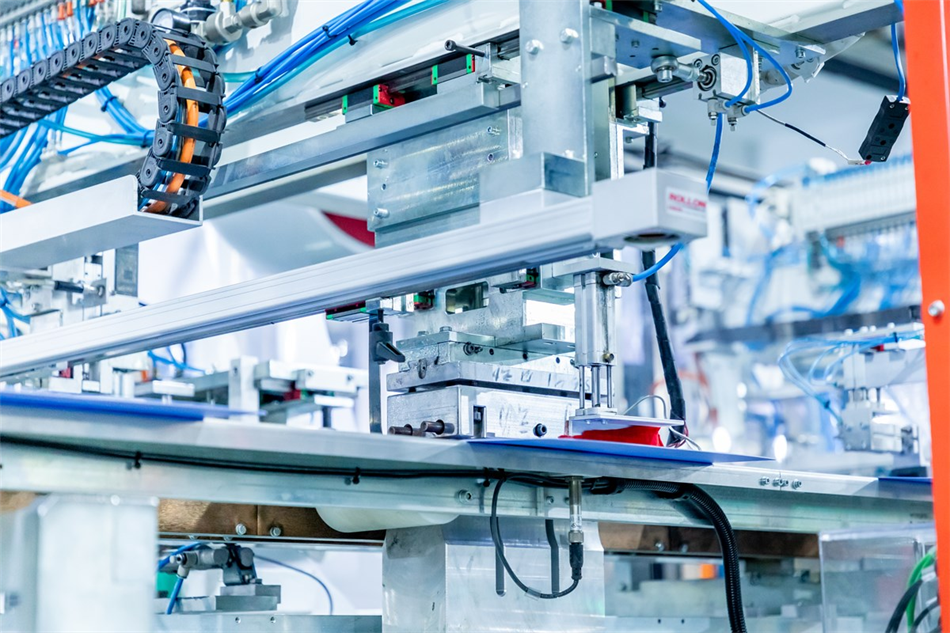Advancing Endoscopy Technology with AC/DC Power Supplies and DC/DC Converters
Unlocking the Safety of Medical Equipment: Advancing Endoscopy Technology with AC/DC Power Supplies and DC/DC Converters
Navigating the complexities of endoscopy technology presents significant challenges. As invasive devices, endoscopes must adhere to strict leakage current regulations while fulfilling diverse power requirements, ranging from lighting to powering motors and cameras. To address these complexities, P-DUKE offers a comprehensive range of custom DC/DC converters designed to meet Type CF standards, ensuring that leakage current remains below 10µA.
Ensuring Electrical Safety in Medical Equipment
The electrical safety of medical devices is fundamentally achieved through two key protective measures:
- Isolation Barrier: The barrier between high-voltage AC or DC and the low-voltage electronic equipment connected to the patient. This topic is covered in our patient monitoring equipment case study.
- Limiting Leakage Current: The leakage current that could potentially flow through the patient’s body must be restricted. While industrial and household applications may allow leakage currents of up to 30mA, medical applications impose much stricter limits. Medical standards define three classes of equipment:
- Type B (Body): Applications with no patient connection.
- Type BF (Body Floating): Applications with patient connection.
- Type CF (Cardiac Floating): Applications with patient connection, suitable for cardiac use.
Under normal operating conditions, leakage current must not exceed the following limits:
| Leakage Current | Type B | Type BF | Type CF |
|---|---|---|---|
| Earth Leakage Current | 500µA | 500µA | 500µA |
| Enclosure Leakage Current | 100µA | 100µA | 100µA |
| Patient Leakage Current | 100µA | 100µA | 10µA |
The primary source of leakage current is the EMI filter used on the primary side of AC/DC power supplies. P-DUKE offers a variety of AC/DC power supplies with built-in Class B EMI filters that meet the 100µA leakage current requirement for Type BF applications (see Figure 1). However, achieving the 10µA leakage current limit required for Type CF applications using only AC/DC power supplies would necessitate excessively large EMI filters.
Integrating AC/DC Power Supplies with DC/DC Converters
As a result, a combination of AC/DC power supplies and downstream DC/DC converters compatible with Type CF applications is often employed. Let’s explore a practical example.
Today, medical endoscopes are not only used for diagnostics but also for minimally invasive surgeries, incorporating modern optics, motors, soft robotics, and high-precision mechanics. These devices, used inside the human body, may come close to the heart and come into contact with blood. Therefore, they must comply with the 10µA leakage current limit for Type CF applications.
A customer sought to design a more compact video endoscope, equipped with an LED light source, a built-in camera in the endoscope’s head, and small motors that control the head’s movement.
How P-DUKE’s Power Solutions Enable Efficient Endoscope Power Systems
The system consists of a central processing unit (CPU) with a microprocessor, an interface to an external video processing unit, a hospital information system, and optional external storage devices. The total power consumption is approximately 26W.
The endoscope requires a 5V/20W power supply for the LED and camera, as well as a 12V/5W power supply for the small motor controlling the head’s movement via a Bowden cable.
The total system power consumption is approximately 44W. With P-DUKE’s full range of power converters, a highly flexible solution can be easily established (see Figure 2).
P-DUKE’s Medical Power Solutions: Enhancing Endoscopy Technology
The 65W MAD65 medical AC/DC power supply converts the AC power into a 12V bus voltage. It is a plug-and-play solution, with a built-in Class B EMI filter, and meets the medical requirements of 4000VAC reinforced isolation and 2xMOPP.
P-DUKE offers a comprehensive range of AC/DC power supplies from 15W to 450W, all of which comply with the 2xMOPP standard and have been updated to the latest medical safety certification EN60601-1 ED3.2.
Various power supply voltages for electronic devices are provided by P-DUKE’s downstream medical DC/DC converters. With leakage currents well below the 10µA limit, all these converters meet the Type CF standards.
For the microprocessor, a 5V/20W module is used, with additional 5W/10W DC/DC converters isolating all interfaces from the internal systems.
The same 5V/20W module powers the LED and camera in the endoscope, while a 12V/5W converter drives the motor. If a 3.3V power supply is needed, a small auxiliary converter can easily provide it.
| Model | MPM20-12S05 | MPP10-12S05A/B | MPK06-12S12A/B | MPU01-12S3P3 |
|---|---|---|---|---|
| DC/DC Converter | ||||
| Input Range | 9 – 18V | 9 – 18V | 9 – 18V | 9.6 – 14.4V |
| Output | 5V/20W | 5V/10W | 12V/5W | 3.3V/1W |
| Isolation | 5000VAC | 5000VAC | 5000VAC | 5000VAC |
| Leakage Current | 2.5µA max | 2µA max | 2µA max | 2µA max |
| Dimensions/Package | 1.6 x 1 inch | DIP24 | DIP24 | SIP-9 |
P-DUKE’s medical power converter series makes it easy to design highly flexible solutions that meet all necessary safety requirements.
Redesign Considerations
The customer is now considering replacing the MAD65 AC/DC power supply with the new MAD50 50W series. The MAD50 occupies 25% less space (3” x 1.5”) than the MAD65 (3” x 2”), thereby freeing up space for other functions.
| Model | Today | Redesign |
|---|---|---|
| MAD65US12C | AC/DC Power Supply | MAD50US12B |
| Vin | 85 – 264 | 85 – 264 |
| Output | 12V/65W | 12V/50W |
| Isolation | 4000VAC | 4000VAC |
| EMI Filter | Class B | Class B |
| Protection | Class I | Class II |
| Dimensions/Package | 3 x 2 inch | 3 x 1.5 inch |
P-DUKE’s advanced medical power supply solutions continue to provide cutting-edge technology, ensuring the safety and efficiency of medical devices like endoscopes.





.jpg)









